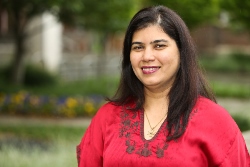Blog
How Street Lights Can Ease Women’s Lives and Boost the Economy
By Elsa D’Silva
A major factor blocking women’s economic integration is the lack of public safety. This is especially relevant in India, recently named the world’s most dangerous country for women. To make cities safer, decision-makers must finally consider women’s needs.
A recent McKinsey & Company study on women’s equality found that advancing the socioeconomic integration of women could add a whopping $12 trillion a year to global growth. The state that has most to gain is my own country, India. According to McKinsey’s calculation, it could add $700 billion of additional GDP in 2025 by advancing gender equality. Yet in order to achieve this, major efforts are needed to bridge both economic and social gender gaps.
To understand what keeps many women in India and elsewhere out of the workforce, it is worth looking at global urbanisation, which is advancing rapidly. By 2050, two-thirds of the world’s population will live in cities. Three of the biggest ten cities will be in India, today’s most populous country with 1.3 billion inhabitants. Yet while more and more Indians are leaving the countryside for the cities, the number of women in the urban labour force is dropping – even though the country now has the highest number ever of women graduating from university. In order to bring 68 million more women into the non-agricultural labour force over the next decade as McKinsey recommends, India’s policy makers, business leaders and social-sector leaders need to focus concerted action on several areas, including education, professional training, job creation, gender-friendly policies and improving infrastructure and support systems. Most importantly, they must address deep-rooted attitudes and stereotypes about the role and status of women.
A major factor limiting women and girls in India from living a quality life and pursuing work outside the home is the pandemic of sexual violence in public spaces. In June 2018, an expert poll for the Thomson Reuters Foundation found that India is the most dangerous country for women worldwide, mostly due to the high risk of sexual violence. In order to fight this phenomenon, I co-founded the organisation Safecity in 2012. We bridge the data gap between under-reported statistics of sexual violence and the daily reality of sexual harassment that women face.
This year, my focus lies on how sexual violence and related gender issues must be considered during urban-planning processes, particularly given the Indian government’s Smart Cities programme, which aims to improve and modernise urban infrastructure. As is regrettably the norm in India, policy and decision-makers rarely consider the needs of women and girls, nor listen to their voices. Women are never part of the team, never invited to the table for discussions and rarely thought of when formulating policy. This is what I want to change.
Through a series of strategic events, I am doing my best to increase the gender consciousness of citizens and policy makers. Through the Global Diplomacy Lab, Eirliani Abdul Rahman and I hosted a session at Deutsche Welle’s Global Media Forum on 12 June 2018. Our aim was to provoke thought, discussion and debate around gender-focused urban planning and its intersection with security, safety, mobility and opportunity. We had about 20 people from different countries join our session, contributing diverse views on issues such as women’s safety in public spaces and transportation, women-only carriages, quotas for women on planning commissions and the usefulness of mobile phones as a source of security.
Later in June, my organisation hosted an Urban Thinkers Campus on Creating Resilience and Inclusion in a City for UN Habitat in Mumbai. Through panel discussions and innovation labs, we wanted participants – who comprised a diverse audience of citizens, government, businesses and NGOs – to think through the issues that affect women and girls disproportionately and limit their movements and opportunities, and to develop action plans that are hyper local and practical.
For example, many bystanders fail to intervene when they see women being harassed or do not feel equipped to stop it. One action plan is bystander intervention training. Confidence that your community has your back and will come to your aid can boost the morale of women and girls in accessing public spaces.
Infrastructure can also play a huge role in facilitating a safe and secure environment, sometimes through surprisingly simple means: street lighting, for instance, is known to strongly influence the perception of safety. Having adequate lighting can dramatically improve the feeling of being safe. Similarly, the broken windows theory of having well-maintained and clean infrastructure can be a positive factor. Another set of action plans may centre on creating effective support systems, like responsive helplines, sensitive police, fast-track judicial systems, safe shelter homes and gender-balanced policies. In combination, these can create an environment conducive for women to take more risks and push boundaries.
My most crucial message to urban planners, government leaders and the general public is this: everyone most help to make the world a more equitable place or we will never achieve the wealth and development projected by the McKinsey & Company report.
You can follow Elsa Marie D’Silva on Twitter (@elsamariedsilva).
About the author:
Elsa Marie D’Silva is a social entrepreneur with interests in the fields of social and personal development, peace, aviation and mental health, and she is also the founder of the Red Dot Foundation (Safecity), a platform that crowdsources personal experiences of sexual violence and abuse in public spaces.
Published on August 21, 2018.
